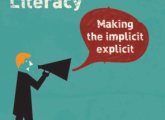There’s nothing wrong with competition in the classroom, argues young entrepreneur George Burgess – as long as everyone, including the teacher, is involved…
The exam driven culture of the education system means educators are continually measuring student ability. It is therefore hardly surprising that education and competition are intimately related. Competition is a natural part of growing up, with children regularly organising their own informal competitions with friends - whether it’s scoring the most goals in a football match or seeing who can last the longest in a staring contest. Undoubtedly, competition is a motivator that can be a significant driving force in learning; it is required to accomplish academic goals and to help students acquire new knowledge. Competition also provides a dimension that reinforces group interdependence. Working together to achieve something improves communication and socialising skills, and an all round ability to understand and work with others. Providing students with the opportunity to compete allows for progression. We all have different abilities, talents and skill levels, and because we’re social beings, we need to work together to achieve greatness. With this in mind, competition can support lower ability students who, when working alongside high achievers, are able to challenge themselves, validate the skills they do have and apply knowledge to make a valuable contribution. If students see a subject as too difficult, not worthy of their time or something they’re not interested in pursuing in their future career endeavours, they’re far less inclined to grapple with the relevant concepts. Introducing friendly competitive activities around these subjects can prove an effective way to reenergise content and engage learners. And of course, further down the line when these young people enter the workforce, they will be competing against others to win jobs; so it could be argued that the earlier they are exposed to some good, old-fashioned competition, the better! So what are the best technologies to encourage healthy competition in the classroom?
Mobile apps
Apps allow for anytime, anywhere access and break down geographical barriers. With many offering multiplayer functionality, students can be sitting on a bus and using their smartphone to compete against a friend - or a student in another country - in an educational quiz. Some of these apps even offer a real-time leader board so young people can track their progress against competitors, spurring them on to improve their score or maintain their lead. Many exam revision apps use quizzes to help prepare students for their exams, which is far more memorable and enjoyable than traditional methods. A lot of the information I still retain from my school days came from when I competed in revision quizzes with friends. In addition, some apps allow users to create their own tests; students can use these to tailor material to their learning objectives and become more self-sufficient learners. There are also a number of apps which allow students to compete against themselves, motivated by the effort of trying to beat a previous score, time or outcome.
Gaming software
Educators increasingly recognise the impact of entertainment software and are utilising games as a teaching device in a growing number of classrooms. More than just encouraging play, gaming software can exercise students’ working memories, enhance their abstract reasoning and problem solving skills, and improve their attention span. Students can also perform better in tests of speed, accuracy and multitasking, and some gaming software allows quests to be aligned to assessment levels for real-time achievement reporting. In a traditional classroom, a student might receive an A for a piece of coursework, but the grade can slip if mistakes are made, and he has to work hard to maintain that standard - which at times can be demoralising. In a gamified setting, a student starts with zero, or as a level 1 player. As she learns, she earns points and moves up a level. If she starts with nothing, her score is only going to improve. She’ll be less likely to be negatively affected by mistakes and more inclined to tackle learning material, motivated by the virtual rewards she receives as she progresses.
Student response systems
Student polling apps (for iPad, Android or Chromebook) are also an increasingly popular method of encouraging friendly competition involving all students. Asking students to recall what has been discussed in a lesson can consolidate the learning objective, while providing teachers with real-time assessment data so that they can see how well their class has mastered a topic, in addition to identifying areas for development. This means teachers can adopt a just-in-time teaching method, adapting course delivery appropriately. Real-time dashboards and leaderboards for online learning environments operate in much the same way and give every class member the opportunity to participate instead of the same students dominating discussion. Many of these systems - app or online - enable students to track their own progress over time, so they can compete against themselves. This is a welcome option for shy children or struggling learners, enabling them to foster a sense of achievement and competition without having to compare their performance with students working at a higher level than themselves. It is important that teachers remind students that their competition journey is a process, not an endpoint. Any one success (or apparent failure) is just another stepping stone to the next point along the way. So whatever the outcome, students need to focus on what they’ve gained and how to keep on developing. It’s my belief that using technology that promotes the type of competition that focuses on improved self-performance and collaborative and cooperative learning, will lead to an efficient, effective, engaging education where everyone’s a winner.
About the author
George Burgess is CEO and founder of exam preparation app Gojimo (gojimo.co), and – at just 22 years old - one of the UK’s youngest serial entrepreneurs.











“Entrepreneurial business favours the open mind. It favours people whose optimism drives them to prepare for many possible futures, pretty much purely for the joy of doing so…”